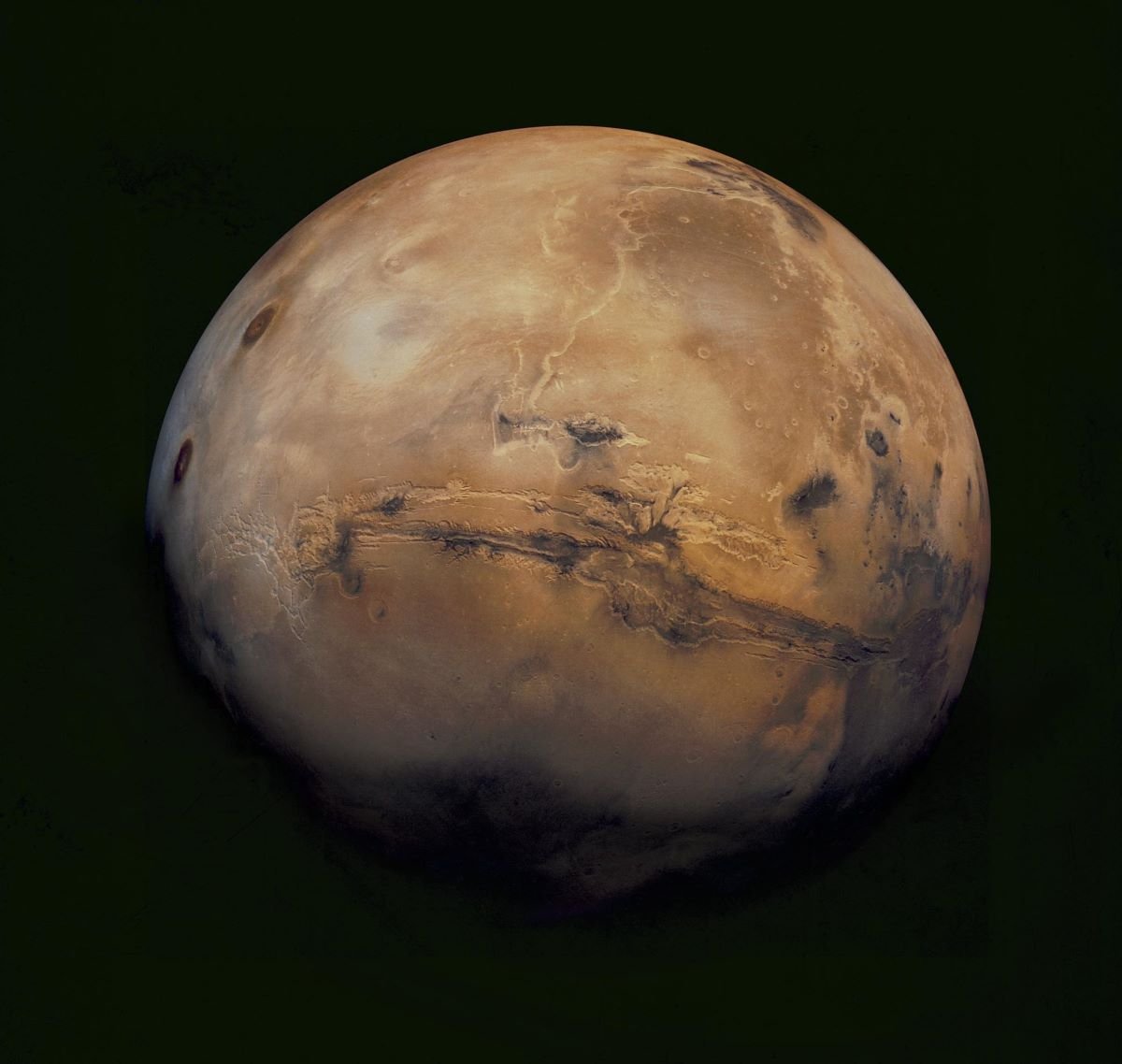Scientists may have finally cracked a 50-year-old mystery surrounding the so-called "Martian dichotomy"—the sharp contrast between the southern highlands and northern lowlands of Mars.
Using data from NASA's InSight lander, researchers have suggested that the difference is rooted in internal planetary processes, rather than external cosmic collisions.
By analyzing marsquakes, the team discovered evidence that the mysterious divide may have been shaped by patterns of heat transfer deep within the red planet.
The findings were published in the peer-reviewed journal Geophysical Research Letters.

What is the Martian Dichotomy?
The Martian dichotomy was first discovered in the 1970s when the Viking Probe returned stunningly detailed images of our planetary neighbor back to Earth.
The images revealed that Mars' southern highlands rise almost four miles higher than the smooth and flat northern lowlands.
As well as this, the southern highlands are ancient, cratered and magnetized, dating back to a time when Mars had a global magnetic field. In contrast, the northern lowlands are younger, less cratered, and lack magnetization. The crust beneath the southern highlands is also significantly thicker.
According to the study's authors, two main hypotheses have been proposed to explain Mars' lopsided appearance.
The endogenic hypothesis suggests that internal forces within the planet, such as heat transfer and mantle dynamics, shaped its surface. The exogenic hypothesis, on the other hand, attributes the differences to massive collisions with moon-sized or smaller celestial bodies in Mars' distant past.

What Scientists Have Found
Using InSight's seismometer, researchers analyzed vibrations from marsquakes to uncover the planet's subsurface secrets. The data showed that seismic waves traveling through the southern highlands lose energy more quickly than those in the northern lowlands, indicating that the rock beneath the southern highlands is significantly hotter.
This temperature difference aligns with models that suggest that the dichotomy originated from internal forces.
Scientists believe that early in Mars' history, tectonic plate movement and molten rock dynamics may have created an uneven crust. As the planet cooled, the movement ceased, creating a "stagnant lid" that preserved the dichotomy.
The patterns of convection within Mars' molten interior then solidified the dramatic divide we see today.
What the Authors Said
The study's authors wrote: "Through the analysis of InSight marsquakes, we have made significant progress in understanding this phenomenon.
"These findings, supported by geochemical analysis of Martian meteorites, provide valuable in situ seismological observations that support the 'endogenic' hypothesis, suggesting that mantle convection plays a crucial role in forming the Martian crustal dichotomy."
What Happens Next
While this study sheds light on the dichotomy's origin, it doesn't solve the mystery entirely.
According to the researchers, more marsquake data will be crucial to confirm the findings, as will comparative studies of Earth, Mars and other planetary bodies.
Do you have a tip on a science story that Newsweek should be covering? Do you have a question about Mars? Let us know via science@newsweek.com.
Reference
Sun, W., & Tkalčić, H. (2025). Constraints on the Origin of the Martian Dichotomy From Southern Highlands Marsquakes. Geophysical Research Letters, 52(1), e2024GL110921. https://doi.org/10.1029/2024GL110921




















 English (US) ·
English (US) ·